What Is Pipe Fittings | Types of Pipe Fittings
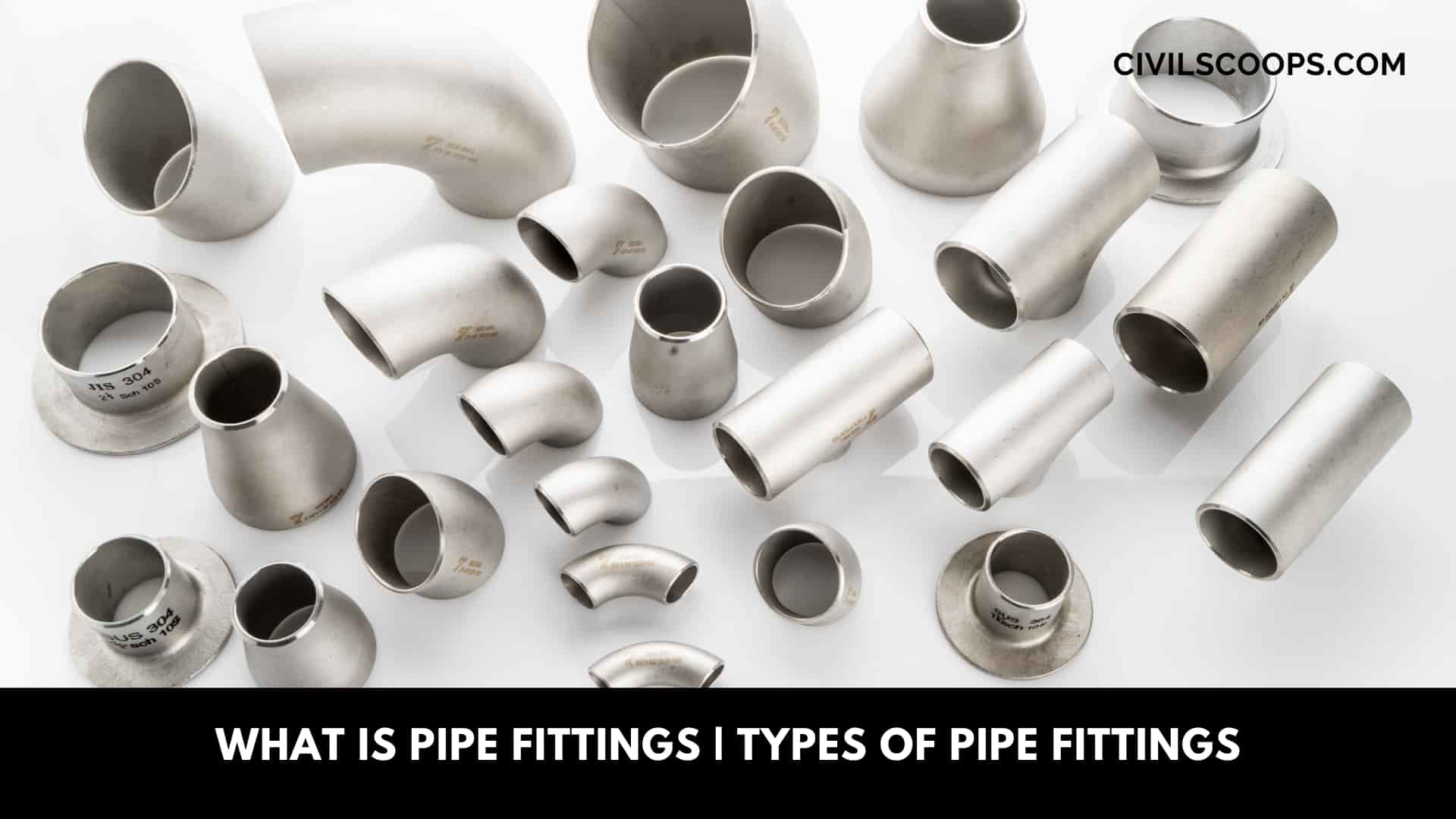
Table of Contents
What Is Pipe Fittings?

Pipe fittings are the process where we divert the flow of the water by using piping components like tees, elbows, etc. In pipe fittings, we change the pipe sizes by using reducing tees, reducers, etc.
Here, we use coupling to connect the flow of water and caps to stop the water.
Types of Pipe Fittings
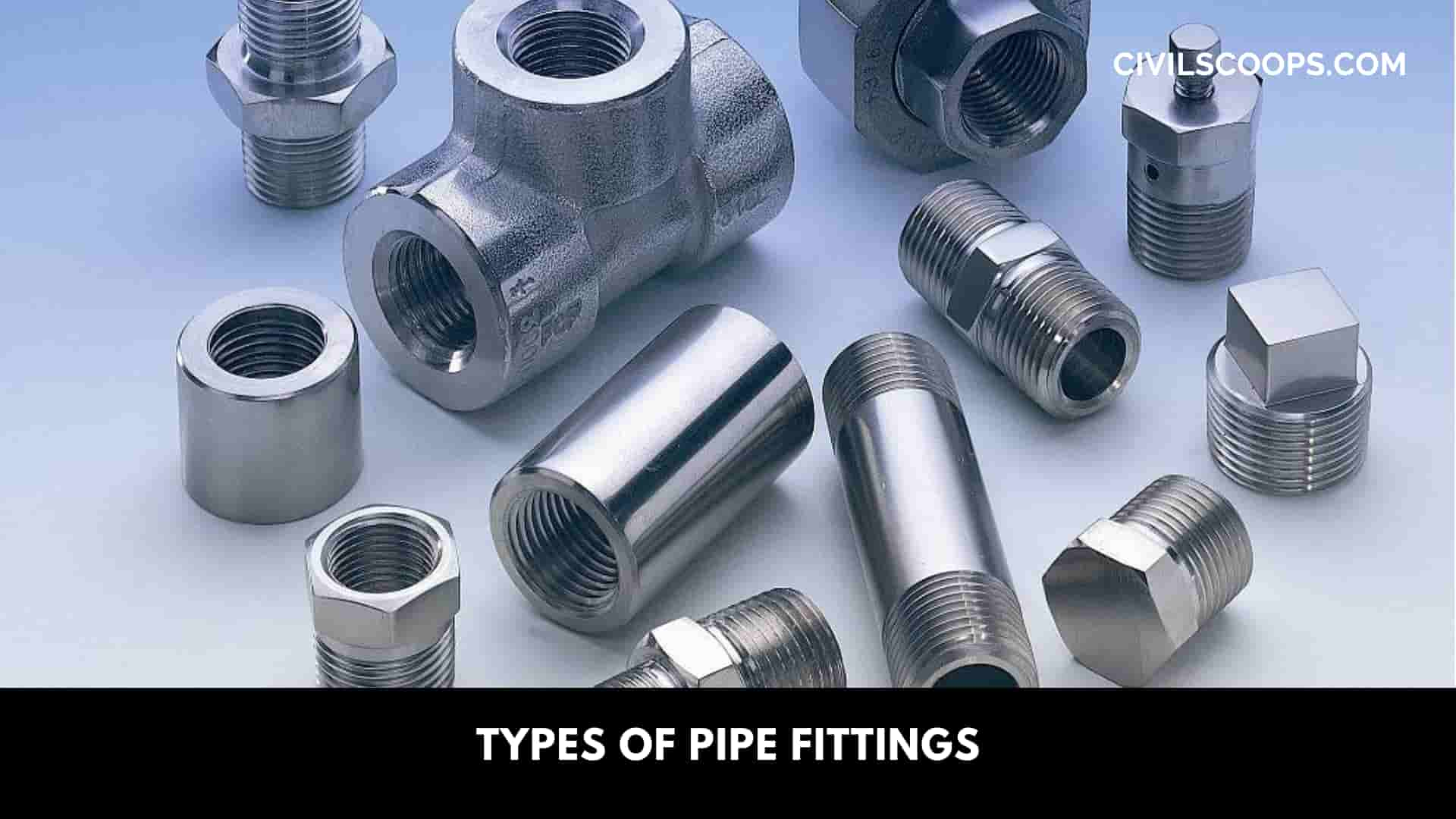
There are different types of joints are available, those are.
- Cross, Tee, Wye and Elbow Fittings
- Tee & Wye Fittings
- Cross Fittings
- Elbow Fittings
- Adapter, Bushing, Coupling and Union Fittings
- Coupling and Adapter Fitting
- Bushing Fittings
- Union Fittings
- Flange and Trap Fittings
- Trap Fittings
- Flange Fittings
- Plug, Cap, Nipple Fittings
- Cap Fittings
- Plug Fittings
- Nipple Fittings
1. Cross, Tee, Wye and Elbow Fittings
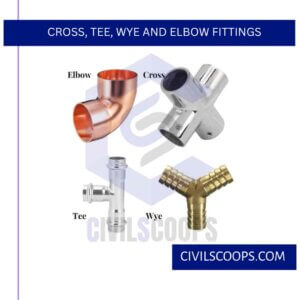
The list of cross, tee, wye and elbow fittings are as follows.
1.1. Tee & Wye Fittings
This type of joint is used to connect three pipes. Here, one inlet is there and two outlets, these are available in the 90-degree bend which is shape of English letter ‘T’.
This is used to split the water flow into two parts or join the two water flows into one. The shape of Wye is like English letter ‘Y’ which is basically a 45-degree bend and it is used in drain application. A Wye has two inlets and one outlet. The side pipe of Wye is used to release the sewer gases in upward direction.
1.2 Cross Fittings
This type of fitting has four openings and here it is used as three inlets and one outlet or three outlets and one inlet. It is generally used in sprinkler systems or irrigation systems.
1.3 Elbow Fittings
This fittings have one opening and it has different bends of 90 degrees, 45 degrees, 60 degrees and 22.5 degrees. Elbow fitting is used to avoid obstructions in the pipe run.
2. Adapter, Bushing, Coupling and Union Fittings
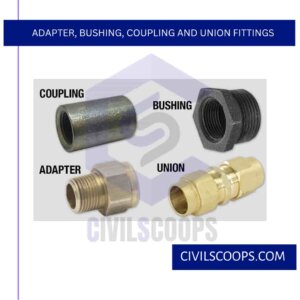
The list of adapter, bushing, coupling and union fittings are as follows.
2.1 Coupling and Adapter Fitting
Coupling is used to connect two pipes, which slips over it and connects permanently. It is generally used to connect a large size pipe with a small one. Adapters are connected when different types of pipes are there like one is a normal pipe and other one is a threaded pipe.
2.2 Bushing Fittings
A bushing is used to reduce the pipe fitting because the inlet of this is large and outlet is small; that’s why it is called reducer bushing.
2.3 Union Fittings
Unions connect two same pipes by threaded rings or nuts. We can easily disconnect the connection by loosening the rings or nuts which is not possible in the coupling.
3. Flange and Trap Fittings
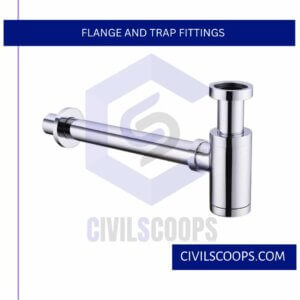
The list of flange and trap fittings are as follows.
3.1 Trap Fittings
Trap is basically a horizontal bend which is fitted in the drainage system of the kitchen or bathroom. The shape of traps are generally ‘U’ and ‘P’ shaped. The traps contain water which is used as the barrier which prevents entering the sewer gases.
3.2 Flange Fittings
Flange fittings are flat fittings which used to seal by using clamps or bolts. This is used through walls, floors, ceilings, etc.
4. Plug, Cap, Nipple Fittings

The list of plug, cap, nipple fittings are as follows.
4.1 Cap Fittings
This is generally used to stop the flow of the flowing materials. This is temporally used to stop when the plumbing work is ongoing.
4.2 Plug Fittings
Plus settings are used at the end of the pipe. A plug is only fits with a threaded pipe.
4.3 Nipple Fittings
It is a small section of male threaded which connects with two female thread.
[su_box title=”FAQ” style=”default” box_color=”#333333″ title_color=”#FFFFFF” radius=”3″ class=”” id=””]
Pipe Fittings
Pipe fittings, also known as pipe connectors, attach one pipe to another in order to lengthen the run or change the flow direction in a plumbing system. These are used to combine, divert or reduce the flow of the water supply, and they come in a variety of sizes to fit the pipe they will connect.
Plumbing Fittings
Plumbing fittings refer to the various components used in plumbing systems to connect, control, or redirect the flow of water or other fluids. These fittings are essential for the proper functioning and installation of plumbing systems in residential, commercial, and industrial buildings.
What Is Pipe Fittings?
Pipe fittings are components used to connect, control, or redirect the flow of fluids (such as water, gas, or chemicals) in a piping system. They are used to join sections of pipe, change pipe direction, branch off or combine pipe lines, and regulate or control the flow of fluid within the system.
Types of Pipe Fittings
There are different kinds of pipe fittings used in piping systems. The main and most commonly sought are: elbows, tees, reducers, unions, couplings, crosses, caps, swage nipples, plugs, bushings, adapters, outlets, valves & flanges.
Sink U Bend
Newcomers to bathroom plumbing sometimes ask, ‘why do I need a U bend? ‘ The simple answer is that the water trapped in the U bend acts as a barrier to the foul smells that otherwise rise from the sewer or other drainage pipework. This is why it is an absolute requirement in the building regulations.
What Is a Coupling in Plumbing?
Coupling and Adapter Fittings – Pipe couplers slip over the outside of two pipes to connect them, usually permanently. A coupling can be a reducer, or reducing coupling, meaning they reduce flow by joining a larger pipe to a smaller size. Adapters are used when connecting two pipes of different types.
What Is a Bushing in Plumbing?
Bushing. A pipe fitting used to join two pipes of different sizes. A bushing is threaded inside and out.
Tee Plumbing
Pipe tee fitting is a fitting that has a T shape. It has two outlets at an angle of 90° each and one main connection line. It is a pipe that has adjacent outlets and used to connect pipes at 90° angle.
Plumbing Joints
Pipe joints are connections at pipe ends that ensure that two pipe sections can be joined to each other to install a pipeline of any length. Joints give strength to the pipeline because longer pipeline sections tend to bend.
How to Connect Pvc Pipe?
Attaching PVC pipe to fittings with PVC cement is not ‘gluing’ them together, it is in fact welding them together. The PVC cement melts the surfaces of the plastics, and after about 30 seconds, permanently fuses them together. This is excellent, because now all of your PVC elements are essential one giant, fused structure, making them just that much more stronger as one solid unit.
Cross Fittings
A pipe cross is a kind of pipe fitting. It is used in the place where four pipes meet together. The pipe cross may have one inlet and three outlets, or there inlets and one outlet. Also, the diameter of the outlet and inlet can be the same and can also be different.
Nptf Thread
NPTF (National Pipe Taper Fuel) is a dryseal tapered pipe thread based on ANSI/ASME B1.20.3 >> ANSI, the American National Standards Institute, oversees the development of voluntary consensus standards for products, services, processes, systems and personnel in the United States.
Pipe Socket
A socket is a fitting that simply goes over the end of a pipe. A 1″ socket end will fit on a 1″ pipe. These are extremely common. Many PVC couplings have socketed ends. A commonly used abbreviation for “socket” is “soc.”
Plumbing Reducer
A reducer is a component in a piping system that changes the pipe size from a larger to a smaller bore. A reducer allows for a change in pipe size to meet flow requirements or to adapt to existing piping.
Copper Pipe Leaking at Connection
Pinhole leaks slowly develop when corrosive materials on the inside of the pipe wear through the metal, forming a leak. The primary cause of pinhole leaks is the composition of the water flowing through your plumbing system.
Leaking Copper Pipe Joint
- Turn off the water supply
- Drain the pipes
- Prepare the area
- Identify the cause of the leak
- Solder the joint
Bushing Plumbing
In plumbing, a bushing is a type of fitting used to connect pipes or fittings of different sizes together. It is designed to reduce the size of a pipe opening, allowing for a secure connection between pipes or fittings of different diameters.
Plug Fittings
Pipe plugs are used in the closing of the ends of various hydraulic or pneumatic pipes or tubes. Plugs are essential devices used in the plumbing apparatus of both industrial and domestic water supply lines, machinery and so on. They are also for removal of air blocks on water pump lines.
Cap Fittings
A Pipe cap is a type of pipe fittings, also known as heads, plugs, bulkheads, which are welded on the pipe end or installed on the external thread of the pipe end to cover the pipes. Used to close the pipeline, the function is the same as the pipe plug.
Trap Fittings
A specialized fitting called a p-trap creates a powerful barrier that stops sewer gas and odor from entering your home. The trap is employed in any plumbing system that uses a drain and accepts sanitary waste from tubs, showers and sinks.
Bushing Fittings
A bushing fitting consists of a cylindrical-shaped piece with one end that has male threads and the other end with female threads. The male-threaded end is designed to fit into a larger pipe or fitting, while the female-threaded end is used to connect a smaller pipe or fitting.
Union Fittings
A union is a threaded fitting which allows the pipe work to be separated and reconnected without any horizontal movement in the pipe. It can be a standalone pipe fitting connecting two pieces of pipe, or an integral part of another fitting (such as a ball valve) which allows it to be separated.
[/su_box]
[su_note note_color=”#F2F2F2 ” text_color=”#333333″ radius=”3″ class=”” id=””]
Like this post? Share it with your friends!
Suggested Read –
- How to Kill Tree Roots?
- What Is GIS In Surveying | Definitions of GIS | Parts & Work Flow of GIS | Advantages of GIS
- How Are Bridges Built | How Are Bridges Constructed | Factors Associated with Building Bridges
- Waterproof a Concrete Roof | Old Concrete Roof Waterproofing | Concrete Roof Sealant Flat Concrete Roof Waterproofing
- What Is Damp Proof Course | Types of Damp Proofing Course | Application of Damp Proofing Course | Advantages & Disadvantages of Damp Proofing Course
[/su_note]
